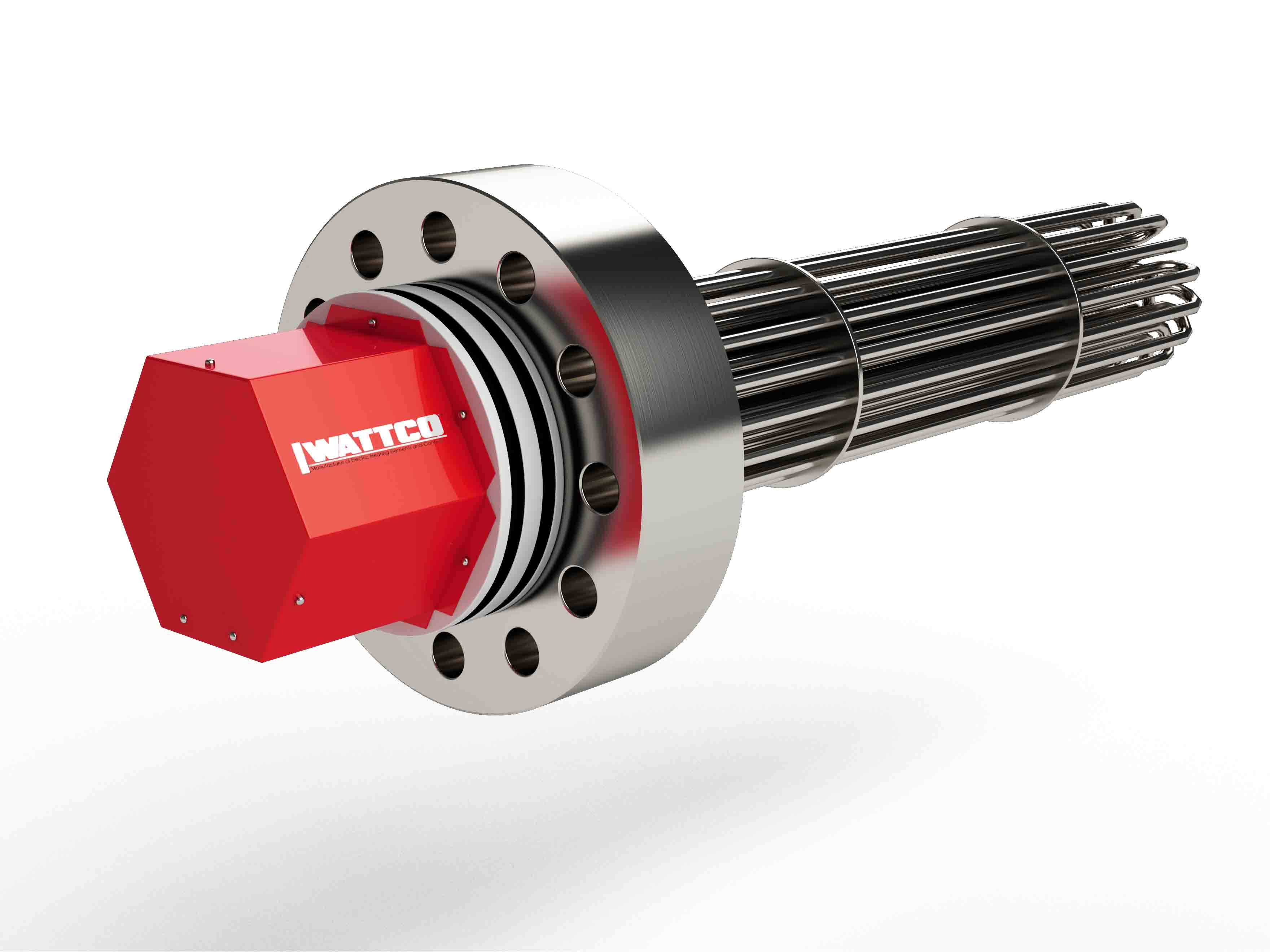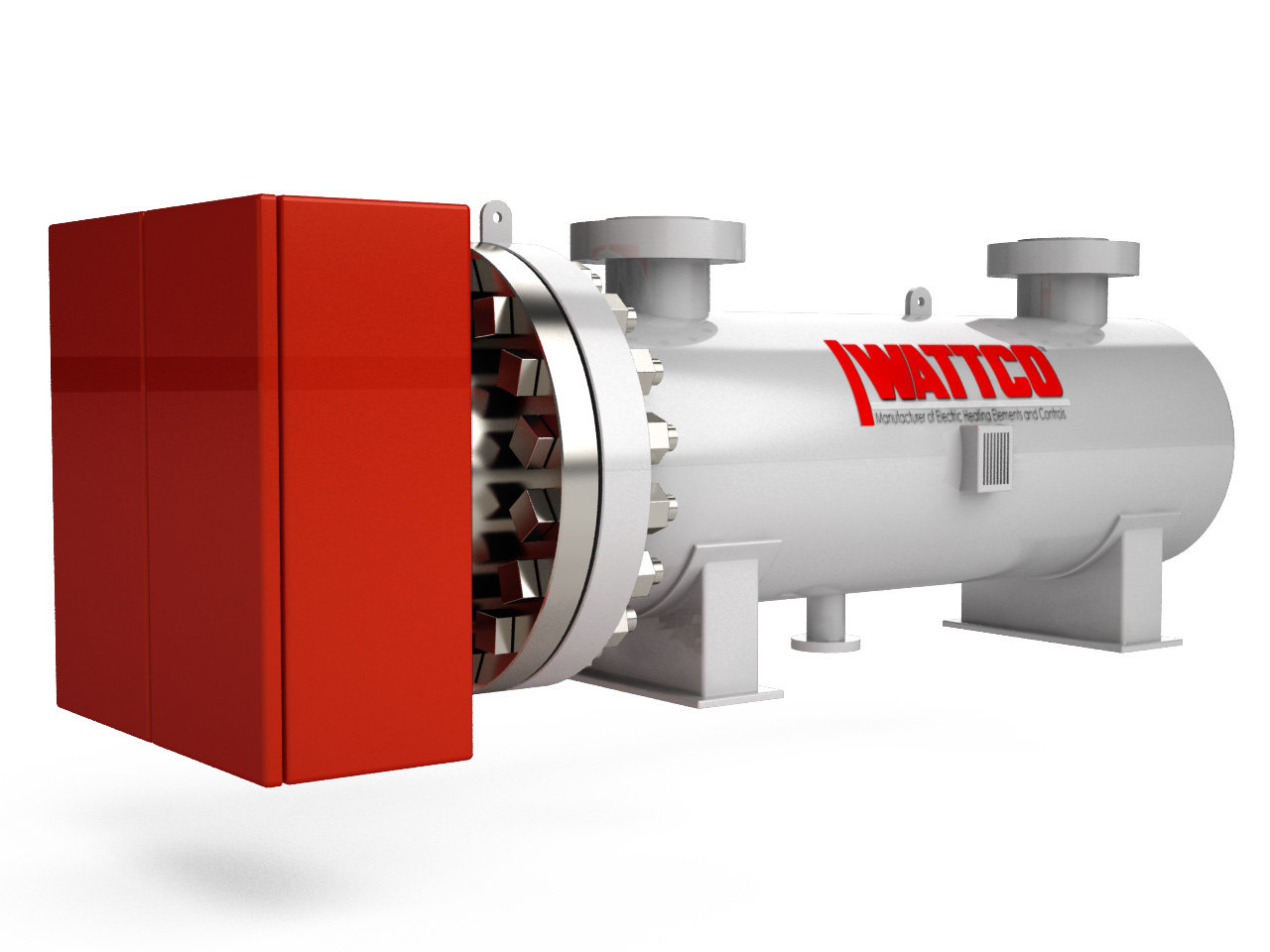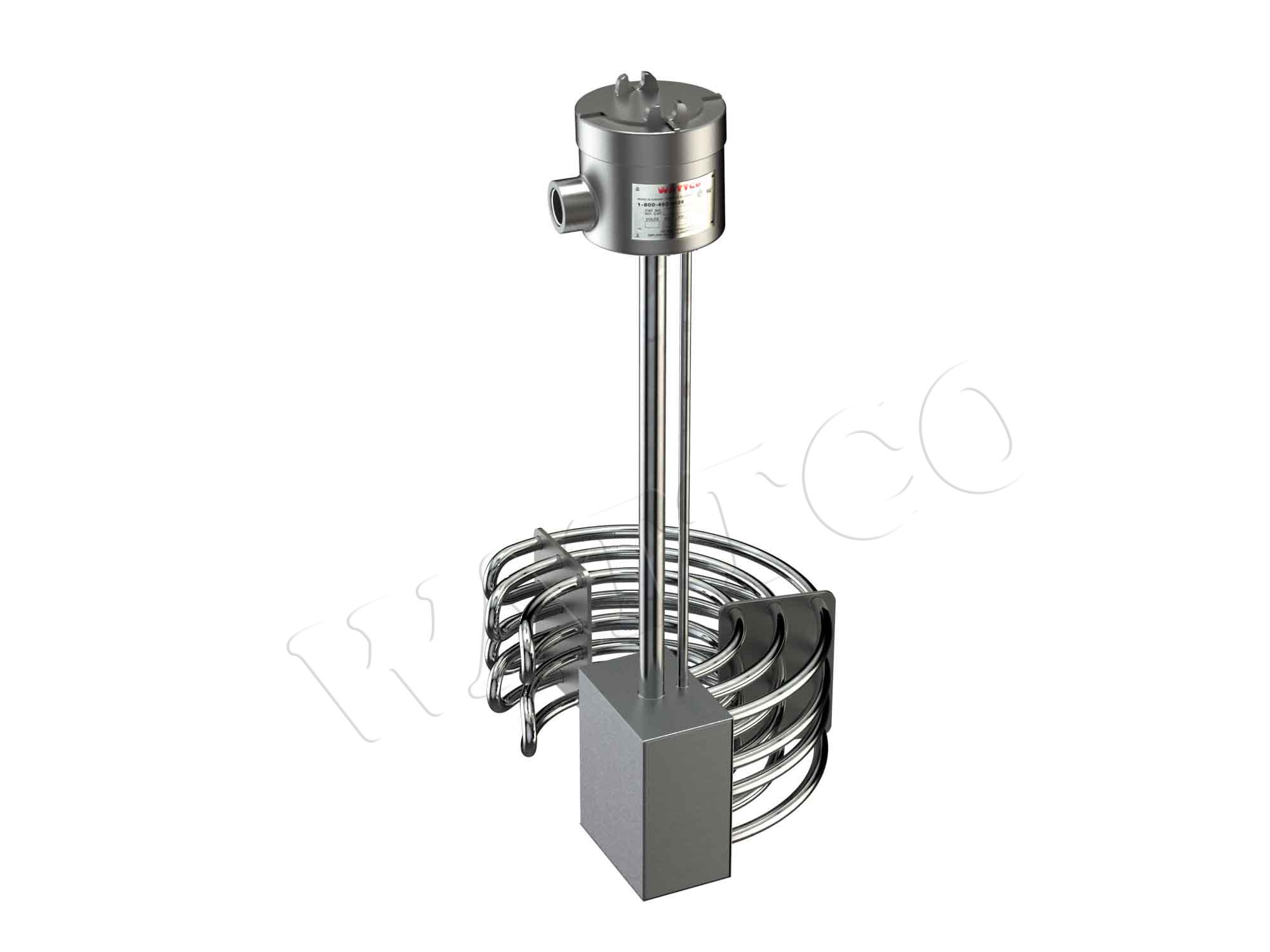Process Immersion Heaters
Immersion heaters are devices installed in tanks or vessels to heat liquids. Most industries typically carry out various processes that demand the use of high levels of heat and energy. There are a number of different types and brands of immersion heaters available in the market today that specifically cater for industrial heating requirements. The common types of industrial immersion heaters are flanged, threaded and over the side.
These key industrial heating tools can be categorized and differentiated by the mechanisms they use in the heating process, the product composition, technical specifications and the product’s different applications. This article discusses the various types of process heaters with particular regard to flanged, circulation and over the side heaters, providing insightful information to industry specialists on product types, uses, composition and technical specifications.
FLANGED HEATERS

Flanged heaters are thru-the-side immersion heaters that make use of pipe flanges between 3 and 14 inches nominal pipe diameter to support high tank pressures of heated steam, compressed gases, or liquids. A matching companion flange is required to install them to the tank wall.
These heaters have a wide range of Watt densities, heating outputs, flange sizes, and ratings. These heaters provide heat for many processes, are simple to install and maintain, easy to monitor and control and are energy efficient making them the most preferred heating option for many industries. Because of these features, flanged heaters are best suited for vats, irregularly shaped vessels and tanks.
Uses of Flanged Immersion Heaters
Flanged heaters are generally designed for use in pressurized vessels and tanks and are predominantly used in the industrial heating of liquids like oil, water, corrosive solutions and heat transfer fluids. These heaters are also used in heating food processing equipment, hot water storage tanks, rinsing and cleaning equipment, boiler and process equipment, frost protection and pre-heating oil & water.
Product Components
A Flanged heater is made of a bent hair pin tubular element brazed or welded in to flange and fitted with wiring boxes to enable electrical connections. Flanged immersion heaters are typically installed by bolting the flange component to the nozzle or the wall of the tank. The heating component is typically permanently welded to the flange.
Technical Specifications
- Heating Element Materials — Copper, Steel , 304 stainless steel, INCOLOY
- Number Elements in Flanges — 3, 6, 12, 18, 27, 36 and 45
- Element Diameter — 0.475″
- Watt Density — 6.5, 15, 23, 45 and 75 W/In 2
Also read: Immersion Heaters: Installation and Maintenance Tips
CIRCULATION HEATERS
Circulation immersion heaters are basically flanged immersion heaters or screwplugs mounted on insulated chambers to increase the efficiency of heating medium flowing in an in-line or side-arm direction. Circulation heaters are normally called electric fired heat exchangers because they generate their own heat and work at maximum efficiency.

Unlike most immersion heaters, circulation heaters tend to adapt to general purpose terminal enclosures, weather or moisture resistant terminal enclosures and hazardous locations that are explosion proof.
Uses of Circulation Heaters
Just like most industrial heaters, circulation heaters have a wide range of applications. These include water heating, freeze protection, heat transfer oil heating, fuel and oil heating, air and gas heating, lube oil and waste oil heating and in drain valves.
Product Components
Circulation heaters are made up of packed units comprising of a flanged or screw plug immersion heater placed in a thermally cloistered heating chambers designed to offer efficient heating capabilities of a liquid medium through side or line arm operation.
Typical Technical Specifications
- 0.475 inch diameter copper, steel or stainless steel sheathed heating elements
- An insulated steel container with a galvanized jacket
- Terminal enclosure (Preferably NEMA Type 1)
- An in-built thermostat (with a 60° to 250°F range)
- Manufacturer recommended mounting brackets or pads
- Flange heaters come with class 150 steel flanges that meet the ANSI B16.5 standards
- Pressure rating 160psi at 250°F temperature
Also read: Immersion Heater Maintenance: How To Maximize Lifespan & Efficiency
OVER THE SIDE HEATERS

Over the side immersion heaters are intended for vessels or tanks where through the side heaters cannot be installed in a convenient manner. These heaters are designed to be installed over the top of the tank or vessel with the heating components directly immersed along the side of the container to the bottom. The natural circulation of fluids that take place within the vessel or tank allows for even heat distribution.
Over the side heaters are highly convenient due to the fact that they require no tank or vessel penetration when mounting, allowing for ample space within the vessel or tank. They can also be easily removed from tank or vessel for instance when cleaning, heater replacement or servicing and do not take up a lot of space.
Unlike other types of industrial heaters in the market, over the top immersion heaters are rather versatile when it comes to usage and storage because of their power ratings, terminal enclosures, and mounting methods.
Uses of Over the Top Immersion Heaters
Due to the diverse variation in heating elements shapes and materials, over the top immersion heaters are used in a wide range of applications. They are great for use in heating liquid and viscous materials such as water, solvents, oils, plating baths, acids and salts.
Immersion heaters are the most popular industrial heaters because they are easy to use and are in most cases the most efficient because of the direct contact the heating components have with the liquid being heated and require no special mountings to install. However, over the top immersion heaters cannot be used to heat gases.
Also read: Electric Process Heaters within Industries
Typical Technical Specifications
The over the side immersion heater comes in the L and O “installed from the top” models which allows for easy fitting into tanks and vessels. Some of the technical specifications of over the top immersion heaters include:
- Heating element material — steel, copper, stainless steel, INCOLOY, Teflon (fluoropolymer), ceramic, quartz and Titanium
- Alloy 800 sheath element watt densities of up to 60 W/in2
- Kilowatt rating — Wattages of up to 200 kW
- Voltages of up to 600 VAC
- Mounting Configurations – Side/top mount, L- shaped and deep tank installations
